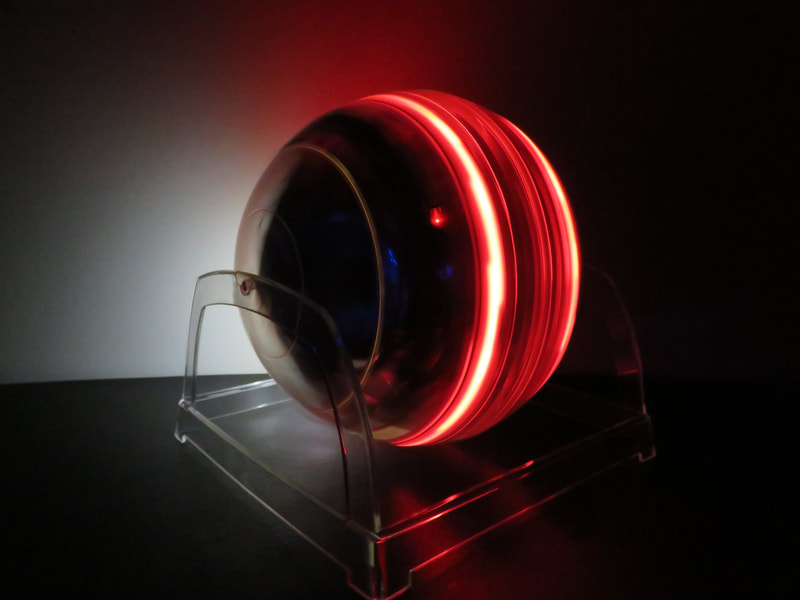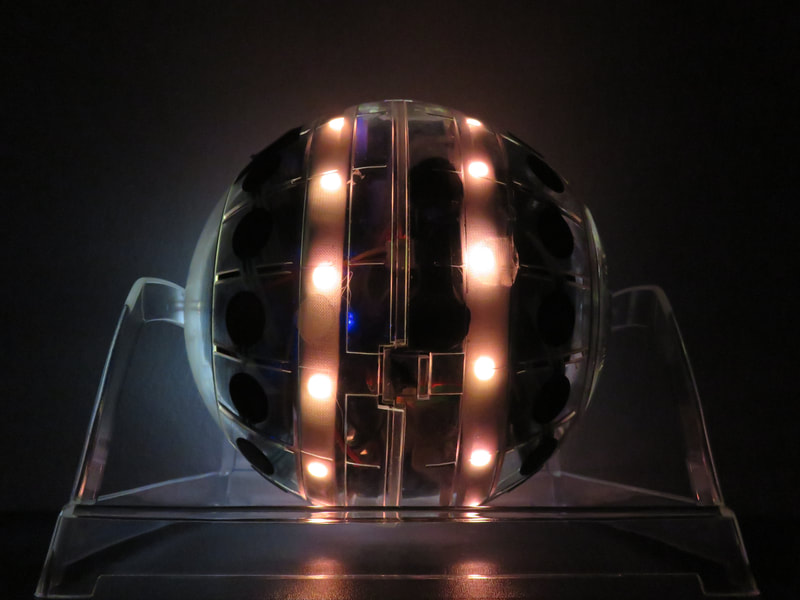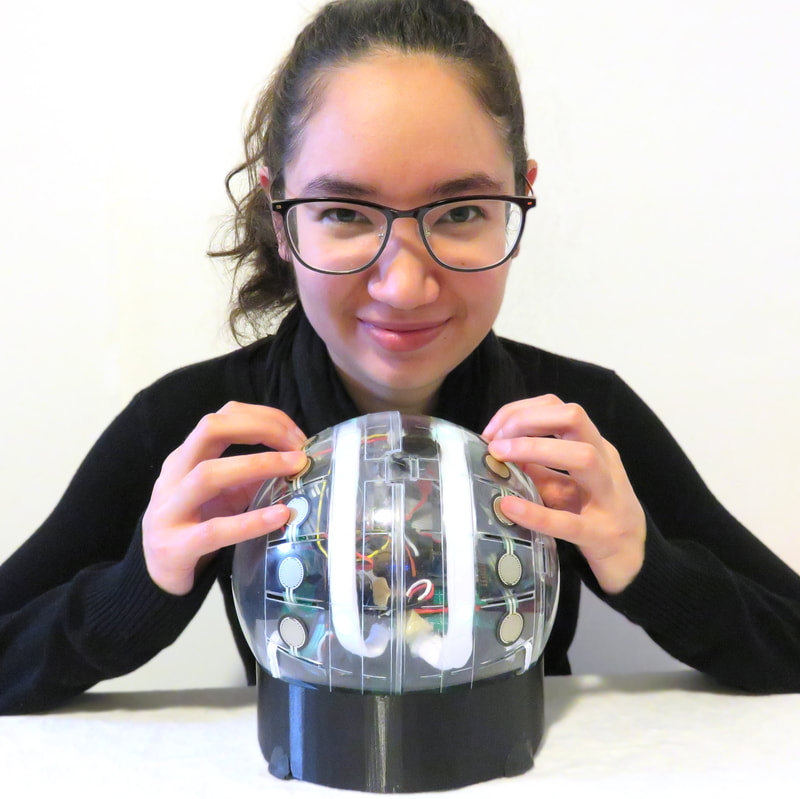|
I had an idea for more pictures in the dark in order to really show off the cool colours from the LEDs.
I feel like I spent a lot of time yesterday practicing for the hamster stand piece, so today I decided that each day I'll start with practicing the twister mat piece first so it doesn't get neglected. I think the tendency to practice the hamster stand piece more is because its mapping is more similar to that of a traditional instrument; it has exact pitches and timbre to worry about and a historical understand of what its sounds should sound like. AKA There would likely be more understanding and criticism from an audience about what would make it sound "good".
I found that instead of trying to memorize which FSR is mapped to which specific note and trying to think about music theory and chords while I am playing (something that I can't do very well with violin either), it is easier to think of how many FSRs are in between the two that I'm playing. One FSR in between are the easiest to visualize and they are thirds. Then I think about two FSRs in between, then three, ect. Thinking this way helps me make more "musical" decisions in the moment than to think about perfect 5ths, 4ths, 6ths, etc. So today with the twister mat practice I realized that it is difficult to remember exactly what is mapped to what with the accelerometer and the IR sensor; it's different for each colour. I realized that some colours, like green for example, used only the X axis of the accelerometer, and others used only the Y axis. This is more challenging to remember, so I changed it so that whenever there is only one axis mapped, it is the Y axis. I have a preference towards the Y axis because of how the FSRs and IR are oriented. I also realized that some playing techniques are more preferable than others depending on the sound engine. For example, I don't like how it sounds in the yellow when the ball is upside down. But I love it when the ball is upside down when it is green. I like to roll the ball around on the ground a lot when it is red, but not so much with the other colours. I dug deeper into why the green on the twister mat has been so difficult. I found that it is being recognized fine, but the gate, controlled by putting a threshold on the clear, has been closing before the trigger for the green can get through. Then it would not change back to green once it can get through because the green's onebang would then need to be reset (because it already fired off). I improved the situation by
1) Add a [pipe 100] to the integer that turns off the gates (but left turning on the gate at its regular rate. 2) Have the "off" always resets the green [onebang], even when it is turned off for therest of the colours. Now it seems a little too easy to accidentally trigger green when "off" is selected. But that's better than it not being sensitive enough. Luckily the sounds on green are my favourite for this piece. And with practice I know tricks to help prevent it from misfiring so it shouldn't be that bad. Since the colours on the twister mat are so dark, I added a brightness function to turn up the colours a bit. Basically, you know it's where it needs to be if when you sample white, it is white. I practiced on the hamster stand patch a bit too. I tried everything I could think of to reduce the latency that Graeme noticed on the FSRs, but I couldn't make any noticeable difference. It's funny that I'm not sure if I noticed any latency before on FSRs, but now that it was pointed out to me I definitely notice. I checked with the old demo patch and I think the latency is there too. I've been working away trying to make the colour detection even more reliable. I added [onebang] to the colour detection and delays on resetting the [onebang]s so that it doesn't misfire as often. In general I'm still having the most troubles with sensing green on the twister mat. I realized the best playing technique with the twister mat is to roll the ball around to the colour I want, and once it is sampled, then lift the ball up off the ground to prevent it from accidentally selecting the wrong colour when I don't mean for it to.
I noticed that it is difficult to audibly tell how the accelerometer is affecting each colour section. I went through each and decided to make sure that the IR is very noticeable. That way I'm mostly focusing on the IR and FSRs during the performance and I just let the accelerometer do its thing, whatever that may be. I'm considering maybe putting another filter on just before the master gain so that there is one unifying parameter for the whole patch. Not sure if it is a good idea or not. Oh, and I'm allowed to have my brother be a guinea pig. Yay! |
Welcome!If you are looking for a summary for my Masters thesis, it is here. Archives
November 2022
Categories |



























 RSS Feed
RSS Feed

